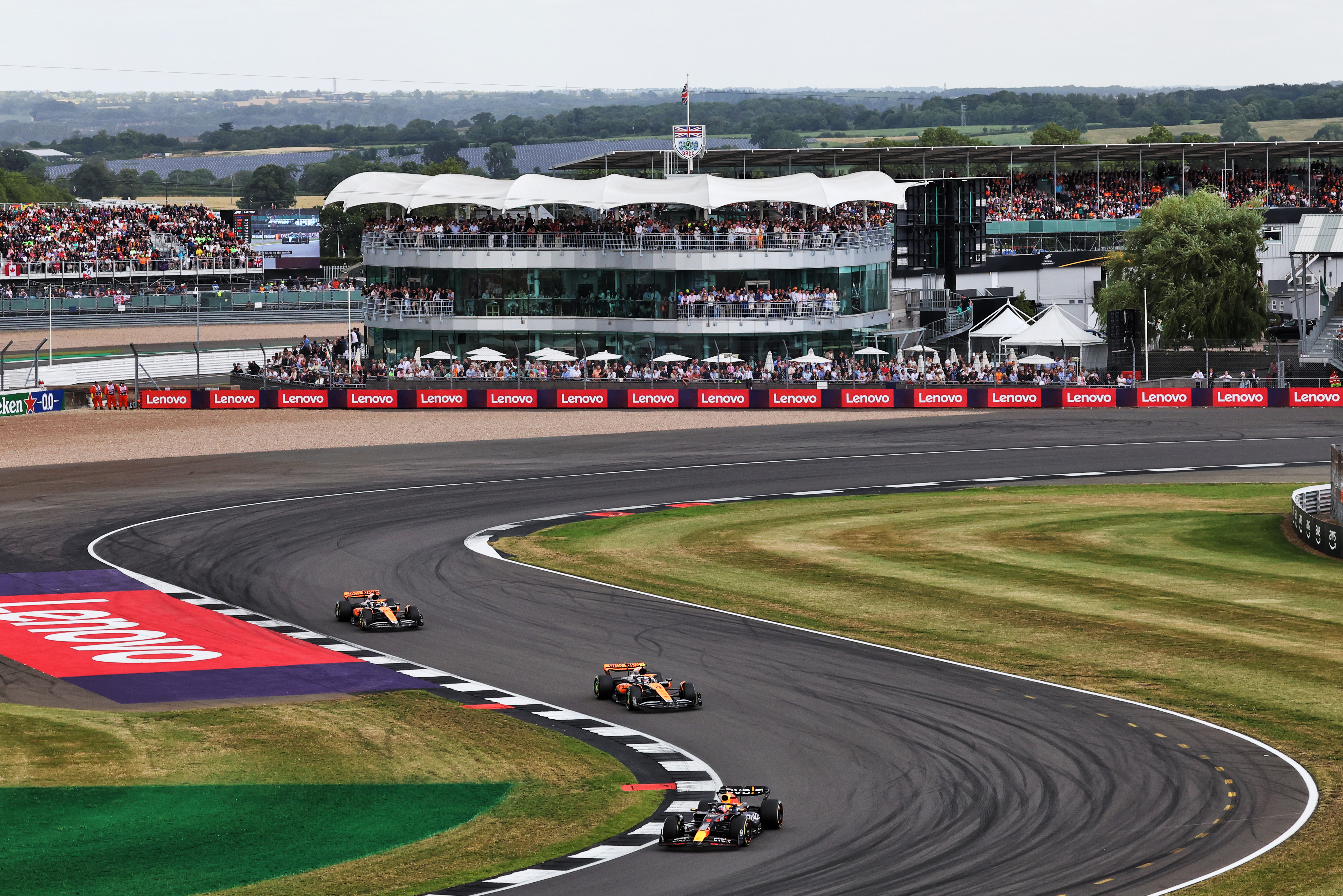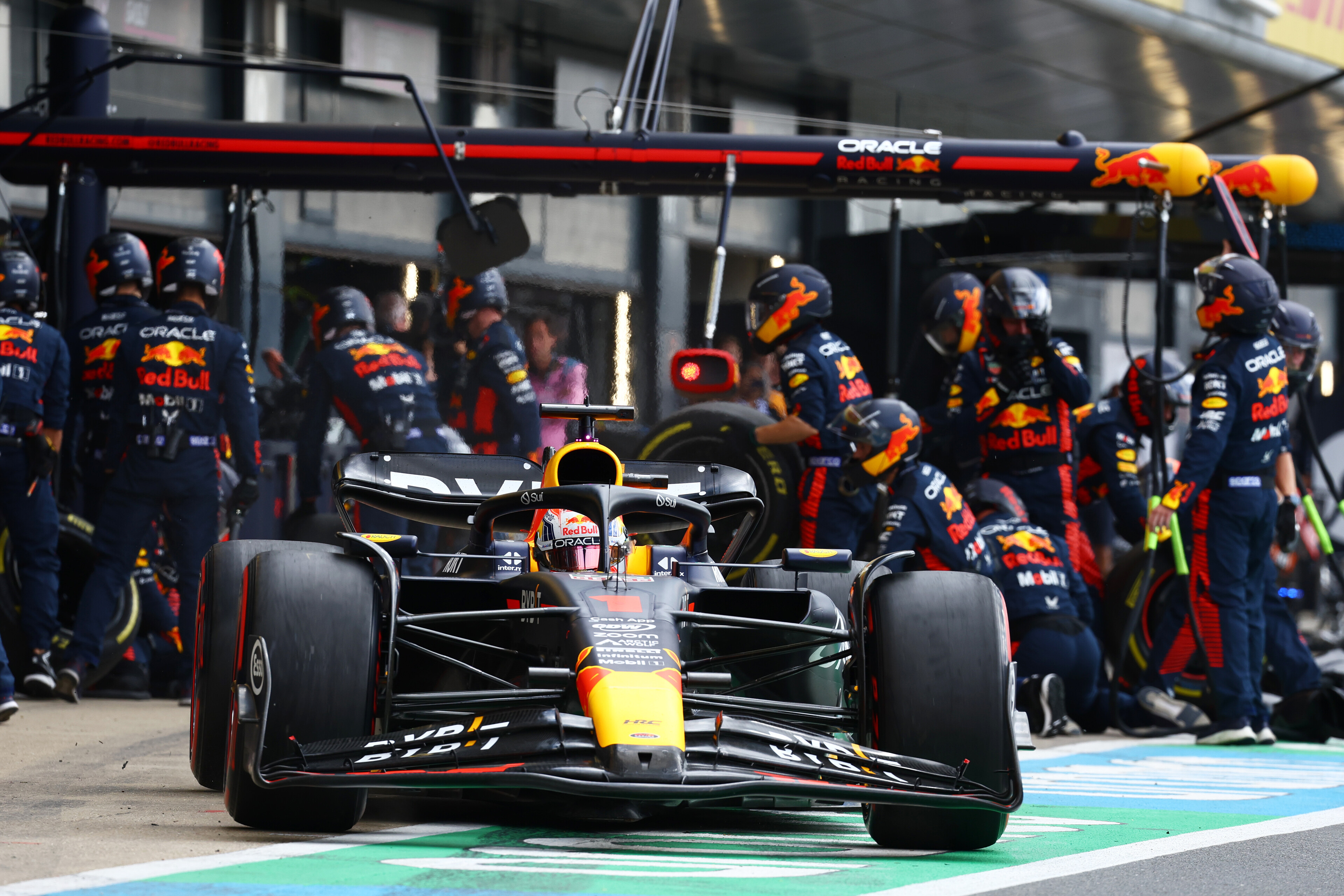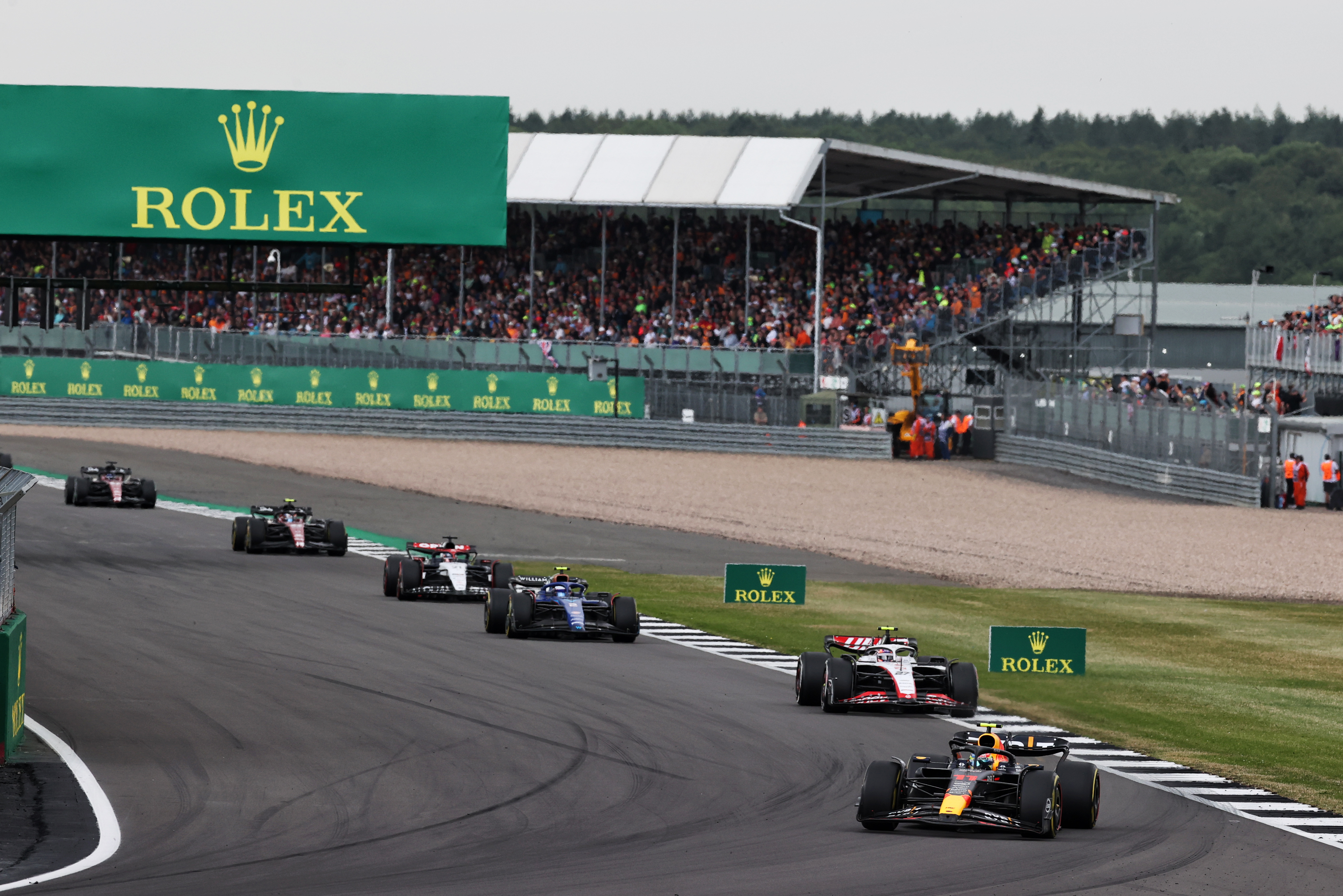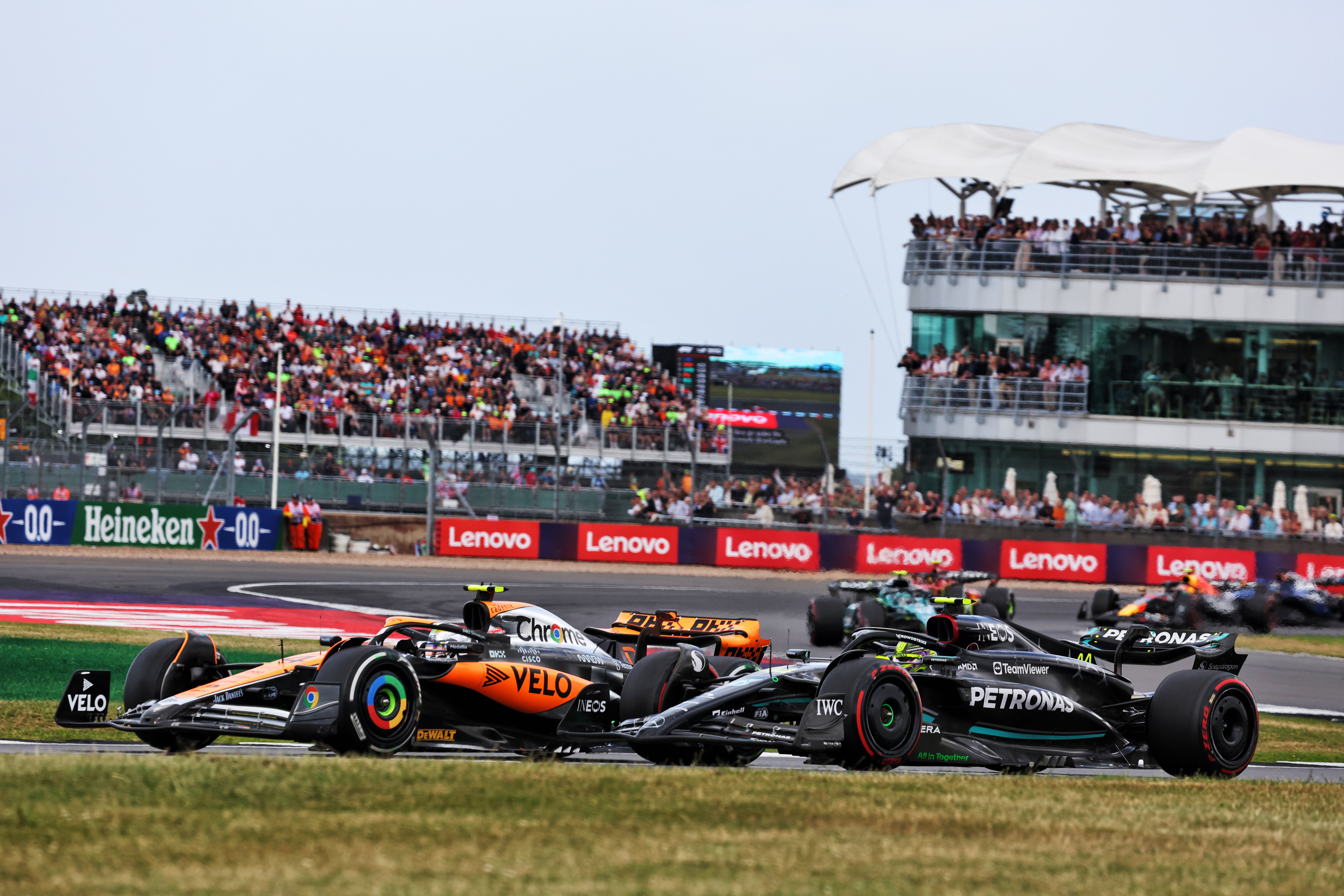Up Next

Yes, of course Max Verstappen’s Red Bull dominated the British Grand Prix. This is the 2023 Formula 1 season.
As McLaren’s Andrea Stella had said when attempting to explain why his cars were so good here at Silverstone, less so at other tracks: “I’m sure Red Bull have similar kinds of issues but it’s within their margin [of superiority] so it doesn’t hurt them.”
Regardless of how ill- or well-suited the RB19 to any given track, it’s inevitably still the fastest car in F1. It’s only ever about how big or small that advantage is. Here it was much smaller than in Austria but some of that may have been to do with the team’s tyre choices. At least relative to McLaren, for which Lando Norris took a great second place having led the first four laps.
Were it not for an order-jumbling safety car 18 laps from the end, McLaren would have been second and third. As it was, Lewis Hamilton’s Mercedes was able to jump Oscar Piastri for the final podium place.
Without the safety car the order behind Verstappen and Norris would likely have been Piastri, George Russell, Hamilton. That circumstantial random event (it was for the engine-blazing Haas of Kevin Magnussen to be removed from the track) just mixed up an order which was jumbled from normal anyway.

What was behind a race in which the best car behind the Red Bull was a McLaren? In which the fast Ferrari of recent races dropped like a stone from fourth and fifth on the grid to ninth and 10th? In which Fernando Alonso’s Aston Martin was just a mid-grid car all weekend? In which a Williams could hold its own with Aston Martin and run ahead of Alpine and the rest all weekend? What was going on?
Lots of things, but the overarching theme was one of performance convergence. The way the circuit and the tyres brought everyone together.
The circuit

This circuit layout is relatively easy for a modern ground effect car and its monstrous high-speed performance. Even the bad cars are good here. The lowliest cars are flat or near-flat through Abbey, Copse and Maggotts, with Stowe a mere lift. All that’s differentiating them is their slow-corner performance through the Village loop, the Brooklands-Luffield complex and Vale. That and their aero efficiency.
To illustrate that point, the two ends of the extreme were Aston Martin and Williams, two cars which around here were quite evenly matched on laptime. The Aston Martin generates way more downforce, which is why it has qualified an average of 0.8 seconds faster in the season. But that downforce comes with a cost in drag.
The drag hurts you around Silverstone far more than the downforce benefits you. If you cannot shed enough, without damaging your slow-corner performance, it can be that you will be no quicker than a very downforce-light Williams which flies down the straights and therefore flies through the flat-out corners too. Because they are not demanding corners from the car’s point of view. “We know we will not be looking like this in Hungary,” Williams team principal James Vowles summarised.
But cars which can combine good aero efficiency with a high level of downforce will still inevitably be faster. Right there is the Red Bull and even after Verstappen was beaten off the line by Norris, it was only ever a matter of waiting, of getting the front tyre temperature it’s always a little reluctant to generate, waiting for DRS to be enabled, pressing Norris long enough to make him deplete his battery – and then put a simple DRS-assisted pass on him down the Wellington Straight.
It took a while to break the DRS back to Norris as Verstappen just monitored the tyre temperatures. But, what do you know, the tyres (mediums) were fine, with nothing like the degradation apparent in the hotter conditions of Friday. So from lap 11 he stepped it up, left the McLaren and everyone else far behind, just like a standard 2023 race.
Verstappen was never anything less than fully in control. He didn’t particularly like the balance of the car, but if it was ill-balanced it was so at a laptime well beyond what anyone else could conjure and his is not an ability overly sensitive to balance traits. He had a cushion of around 10s when the safety car came out.
The tyres

Red Bull had originally planned to switch Verstappen to hards when he stopped – and it hadn’t been figuring on making its single stop anything like as late as lap 34 of 52 (when the safety car came out). But the degradation rate for everyone was exceptionally low. So he stayed out, just in case there was a safety car and because the medium remained quicker than a new hard would have been.
Furthermore, deg had even been low on the softs fitted to Russell’s car. Mercedes had been alone among the top 10 in not being afraid of the C3 soft for race day. Most teams were expecting the red-striped tyre not to be seen at all. But it was fine. Russell hassled Charles Leclerc’s fourth-placed Ferrari from the start until scaring Ferrari into pitting him on lap 18 and ran another 10 laps thereafter before they wore out.
Red Bull, seeing all this, changed its mind and put Verstappen on softs (just as it had a few laps earlier with Sergio Perez, making heavy work of his progress through the field from 15th on the grid).

Why was the degradation so low? It was probably unconnected to this being the introduction of the new stiffer construction. It’s happened like this at Silverstone before in the Pirelli era. If it’s a cool enough day and the compounds are on the hard side for a series of fast curves which are devoured as little more than kinks, the tyres stay on the happy side of thermal degradation and can be pushed hard. It was like this in 2019 too.
But it was just a couple of laps into the restart when Verstappen realised that, on the Red Bull at least, the softs were not indestructible.
“I realised that it was quite tricky to keep them under control with the temperatures,” he said. “The gap, of course, stayed quite similar, but it wasn’t particularly nice to drive. So, we’ll look into that, maybe we should have gone on the hard tyre, at least we could have pushed a little bit harder over the whole stint.”
The ideal mix of compounds was seemingly different for each car. “This is something we have been trying to achieve,” said Pirelli’s Mario Isola. “It means the teams can match their choices around their cars. The McLaren which we know is quite hard on the tyres was able to make the hard work well. The Mercedes was good with the soft.” Yet more convergence.
Mercedes didn’t take its reading from Friday’s 42C track temperature long runs when the deg of the soft was not good. Not when race day was run at on a track of 25C. Basing its decision more on last year’s race here, it didn’t see the soft as a risky choice and was surprised when the blankets came off to see everyone else on mediums.
Mercedes split its strategy, with Hamilton starting on mediums, so as to have at least one car able to maximise the chances of taking a safety car pitstop. Which of course is exactly what happened.
Russell had already stopped and fought his way past the older-tyred Leclerc when the safety car came. The starring Piastri had also stopped already, having run a comfortable third and having no problem running with Norris (in fact he’d even radioed in he felt he was faster and enquired whether he might be allowed to pass). As had Carlos Sainz’s Ferrari, defending from a feared undercut attempt by Hamilton.

This all played into Hamilton’s hands and pitting under the safety car, taking the 11s saving, he vaulted past all three to be sitting right on Norris’s tail, in third, ready for the restart on soft tyres, with Norris – much to his dismay – on hards.
But it was less dire than Lando feared. The McLaren’s ability to switch on the tyres meant it wasn’t as big a disadvantage it might have been – and its speed through the high-speed kinks was greater than that of the Mercedes, making it impossible for Hamilton to find his way through without DRS. Once DRS was enabled the McLaren’s tyres were up to temperature, Hamilton’s were temporarily overheated and Norris was safe.
There was a good reason McLaren hadn’t acquiesced to Norris’s request for softs at his stop. Initially there was a VSC and there would have been no restart drama in starting on hards.
But when that changed to a safety car, suddenly the imperative for softs to protect the place increased. But this was as Norris was almost at the pit entry and as the softs weren’t ready it would have been too risky to have changed. This put Norris in the situation of being on hards for a restart in which a soft-shod Hamilton was right on his back. It seemed impossible he could repel the Mercedes, but actually that’s exactly what he did to thrilling effect.
Russell was disappointed with the impact the timing of the safety car had on his drive to fifth but he was able to keep the recovering Perez behind him, both disadvantaged by the safety car.

The Ferrari drivers lost places to having stopped before the safety car too, but they were not blameless in that situation. Ferrari ran this race as if it was one of standard thermal degradation. Leclerc and Sainz ran a conservative pace from the start, then each responded to imagined undercut threats. This conservatism led them to be fitted with hards at their stops too (with Leclerc then making a second stop under the safety car).
Partly Ferrari was underprepared through Leclerc having missed FP2 to an electrical problem, and maybe there was an element of the very strong winds hurting it more than other cars, but every choice on race day was just too conservative.
“We need to have a deep look on the weekend,” said team boss Fred Vasseur. “We were a bit scared with the deg. Probably somewhere in our mind we had the first races of the season.
“We were far too conservative on the tyre management and we didn’t push enough.”
Alex Albon was able to pass Leclerc at the stops and Sainz on track, his Williams chasing Alonso’s seventh-placed Aston Martin across the line (via a last-lap defence from Leclerc).

The winner gave as good a summary of this unusual race behind him as any.
“It’s very confusing to me because every single race weekend, it’s someone else [behind],” said Verstappen.
“I think it’s because it’s so close behind that if you get your car in a little bit of a better window, it works on one particular track.
“I don’t know what’s going to happen in Hungary to be honest, who is going to be quick or the second quickest.
“The stable factor so far is that every single weekend, it seems like we are on top, which of course is the most important from our side.
“But again, Hungary is a completely different track, we will put some upgrades on the car there and hopefully they will work well.”






